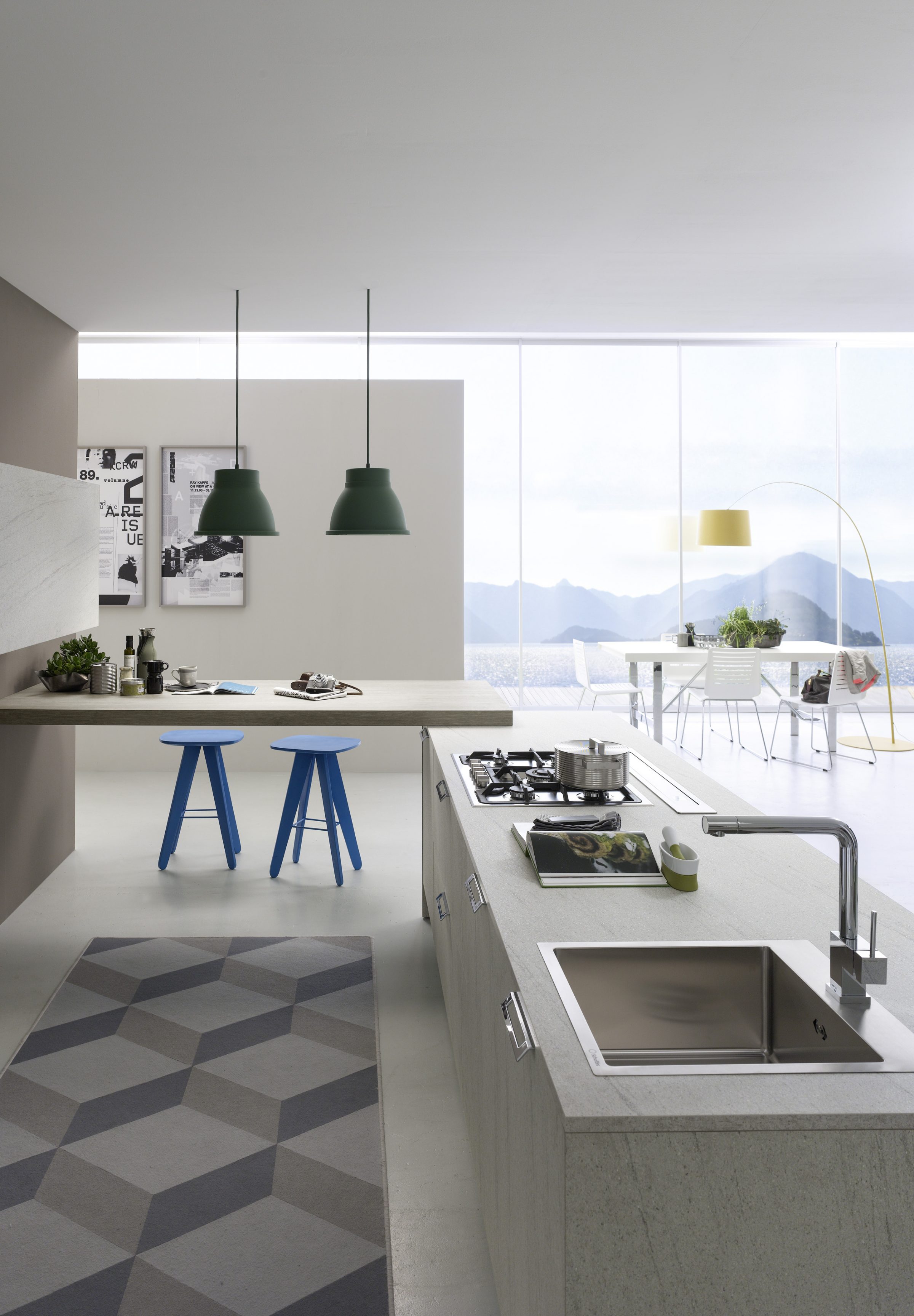When thinking on the type of kitchen layout to use, consider the dimensions of the space, the intended formality of your average dining experience, and the number of potential cooks in your home.
Kitchens are perhaps the busiest parts of most households, especially in family homes that serve up three square meals a day to multiple generations of diners. Due to the typically compact floor space of urban homes, and the list of modern appliances required for a convenient and full meal, furnishing a kitchen of any size likely entails a greater degree of forward planning than any other part of the home.

Interior design by: Pedini Cucine
Whether you are renovating your present kitchen, or looking at a fresh slate, deciding on the kind of configuration you want for your cabinetry and countertops would be the first step towards furnishing your kitchen – as these bulky elements will be sheltering your appliances and will represent the metaphorical backbone of your décor.
Single-Wall

Interior design by: ID Industries
Often used in studios apartments and smaller homes with open layouts, the single-wall configuration is ideal for taking up the least amount of wall space, especially in areas that serve multiple purposes, such as conjoined dining and kitchen spaces. As the refrigerator, sink, and stove top are located in a line, this layout is typically seen as suitable for homes with only one potential cook, but modern examples of the single-wall layout are often seen accompanied by a compact dining surface, or an island for cabinetry, to provide additional workspace, storage, and to serve as a form of separation between the culinary space and the rest of the home.

Interior design by: Surface R
Galley

Interior design by: Jashen Interior
The standard layout found in commercial kitchens on land, sea, and in the air – the galley layout is preferred for the most economical arrangement of the necessary amenities in the smallest of spaces between two parallel walls. While this layout provides a walkway through the kitchen, and allows one to keep serving ware away from the potential chaos of the work triangle, the galley configuration does not typically leave enough space for a dining nook, and the enclosing walls may represent a distinct barrier to interactions between chef and diner.
L-Shaped

Interior design by: The Roof Studio
The stereotypical layout of the average kitchen, the L-shaped configuration can be formed out of a single-wall layout with the addition of an island, or with two lengths of countertops joined at a corner. This layout enables the most compact work triangle between the necessary culinary facilities while providing foot traffic space for additional cooks and wandering dinner guests. As the L-shaped layout results in an abundance of leftover floor space, this configuration provides the possibility of adding a sizable dining surface, or additional work space in the centre of the room.

Interior design by: Surface R
U-Shaped

Tip: A generously sized kitchen is required for a U-shaped configuration to not seem cramped, as the inside corners formed by cabinetry take up significant floor space. Interior design by: Viincology
With the U-shaped layout, the work triangle covers a much greater distance, often negating the possibility of adding dining surfaces to the centre of smaller kitchens. A wide kitchen is needed to accommodate the extra space needed by corner cabinetry, but despite typically requiring spaces of greater dimensions, the U-shaped configuration enables an uninterrupted view of the rest of the home in an open layout. With the addition of a kitchen island either projecting from a wall or located in the centre, the U-shaped layout can be converted into a G-shape for a casual dining surface and additional work space facing the rest of the home.
L-Shaped with Island

Interior design by: Desigva Interior
In a home with an open layout, the typical L-shaped configuration leaves a cook unceremoniously facing the walls and corners. With the addition of an island projecting from the wall, or positioned in the centre of the room, diners can be accommodated for casual eat-in sessions, and face-to-face conversations can be held while preparing a meal on the extra work surface. Adding a projecting island counter to an L-shaped configuration changes a distinctly open layout to one that separates the kitchen from the rest of the home.
Tip: The standard L-shaped configuration leaves some room for a projecting island – not just to subdivide and enclose the space, but also to enable the chef to engage in face-to-face conversation with any dinner guests who wander into the kitchen.











